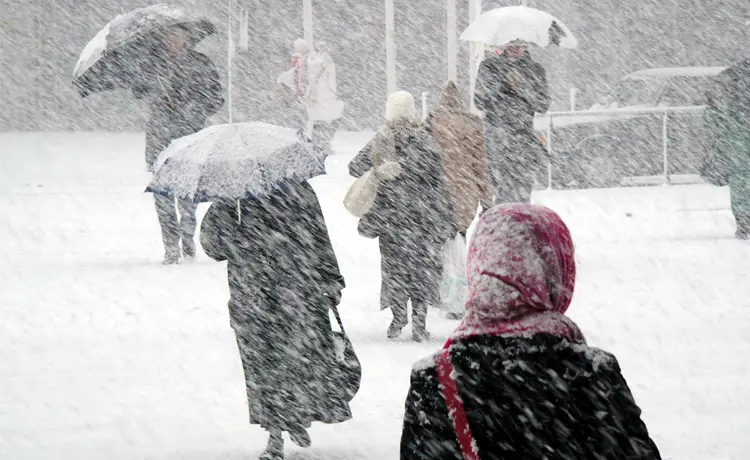The fact is, most people are unprepared when a major snowstorm hits. The ice, snow and extreme cold can knock out electricity for days, leaving families at risk of car accidents, frostbite and hypothermia. Before a storm warning comes in, learn how to prepare your family with this step-by-step checklist. By planning ahead now, you can keep your family safe and warm all winter long.
Snowstorm Prep
Pay Attention to Weather Reports and Warnings
- Stay up to date with the latest weather forecasts in your area.
- Sign up for local weather alerts and warnings. In the event of a snowstorm, public safety officials will also send emergency alerts to you via mobile devices, cable TV, etc.
Learn the Signs of Frostbite and Hypothermia
- Signs of frostbite include numbness, loss of color in the extremities (such as ears, fingers and toes) and unusually firm or waxy-looking skin. If you detect symptoms of frostbite, get the person to a warm room, cover exposed skin and seek medical attention immediately.
- Signs of hypothermia include shivering, memory loss, slurred speech and exhaustion. If you detect symptoms of hypothermia, take the person's temperature. If his or her temperature is below 95°F, seek medical attention immediately.
Winterize Your Home
- Protect your home from the cold with insulation, caulking and weather-stripping. Make sure your roof, chimney and heating equipment are cleaned and inspected each year.
- Test smoke alarms and install carbon monoxide detectors in central locations. You should also have fire extinguishers on hand and make sure everyone in your home knows how to use them.
- Keep your driveway clear of ice and snow. Don't forget to cut away tree branches that are hanging too low.
Build Emergency Supply Kits
- Build an emergency kit for your home and one for each car, as well as two first aid kits and a go-bag.
- At a minimum, your emergency kit should include a first aid kit, nonperishable food and water, tools and safety items (matches, flashlight and a whistle), warm clothes and blankets, and critical documents (kept in a waterproof container).
You should have enough food, water and other supplies to last at least 72 hours.
Winter-Check Your Vehicle
- Have a mechanic inspect your vehicle to ensure the following components are working safely: antifreeze levels, battery and ignition system, heater and defroster, windshield wiper equipment, brakes and winter tires.
- Stock up on emergency supplies for your car, including jumper cables, sand, flashlight and bottled water. Always keep your gas tank full.
Create and Practice Your Family Emergency Plan
- When disaster strikes, make sure your family knows how to communicate and reunite in different situations.
- Each family member should have an emergency contact card that includes two meeting places, contact information and your out-of-town contact.
Download and print your own family emergency plan at Ready.gov.
For more information on our Security & Preparedness products, browse the QuickSeries® library of guides, including Make a Plan: Your Family Emergency Preparedness Guide.
